This article on Bianchi Holsters comes to us from 1968. Enjoy!
“My idea of a good gun scabbard is easy to sum up,” said John Bianchi. “It must be simple, comfortable, fast – and made of the best materials available.”
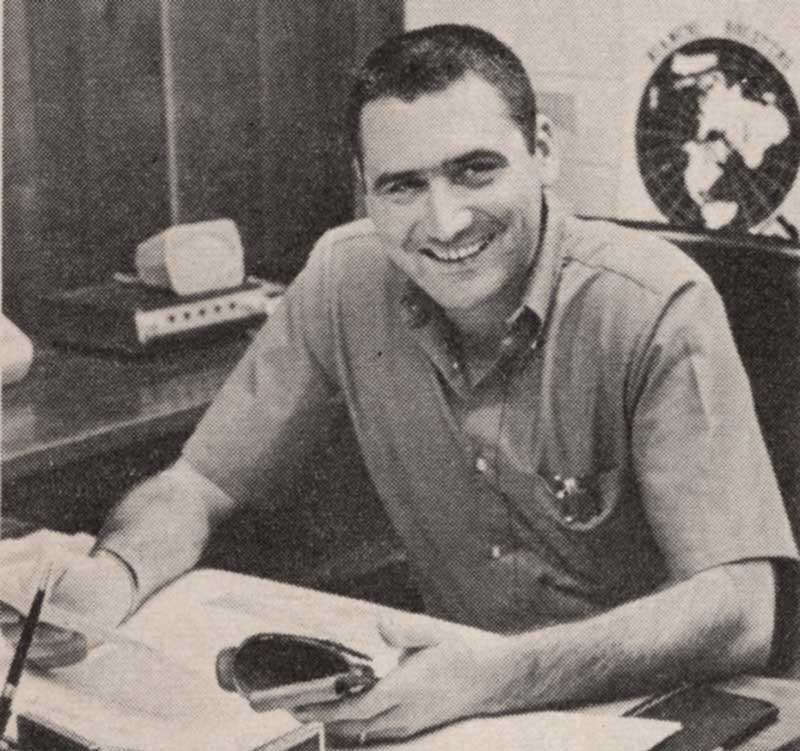
This notion of holster-making has propelled John Bianchi’s one-time hobby into an enterprise that will soon do a million dollars worth of business a year.
Recently I paid a visit to the Bianchi factory in Monrovia, Calif., and talked with this one-time police officer who places such high regard on practicality and quality.
Born in New York City, John moved to California with his parents, and he began making holsters when he served in the Army; it started as a pastime during his off-duty hours while he was stationed in Alaska. Upon returning to civilian life, he joined the police force in Monrovia, and he acquired eight years of experience as a patrolman.
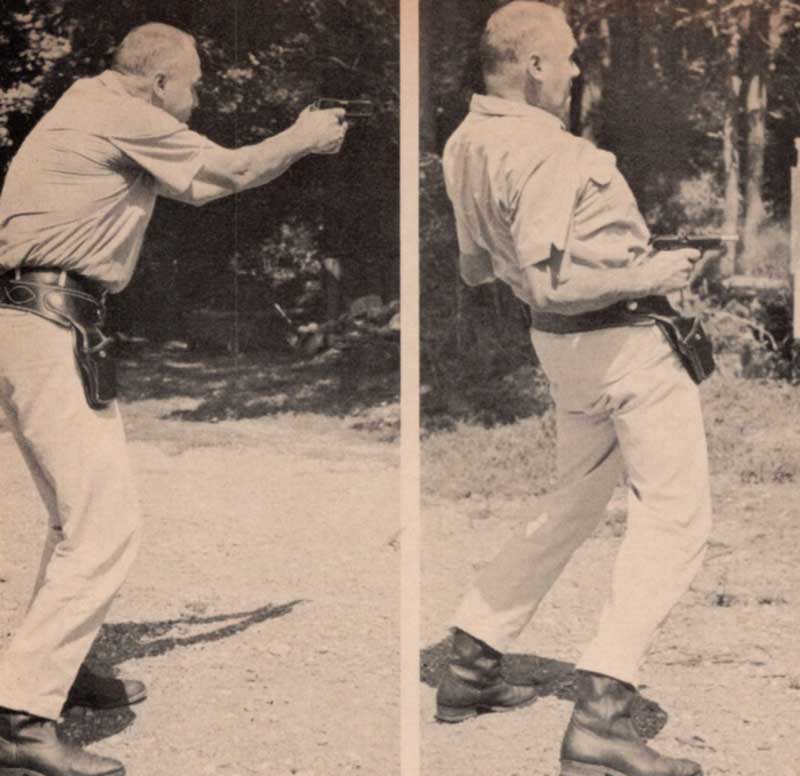
His holster-making hobby remained one of his prime interests; he fashioned scabbards and belts, entirely by hand, in his kitchen at night. His fellow officers thought highly of his work, and Bianchi eventually purchased a 60-year-old hand-cranked sewing machine to help meet the demand for his rigs. His hobby was now becoming a paying sideline.
The Bianchi Business Grows
It didn’t take long before Bianchi was making more from his part-time holster business than from his salary as a police officer, so he resigned from the force and moved his operation into a two-car garage adjoining his home.
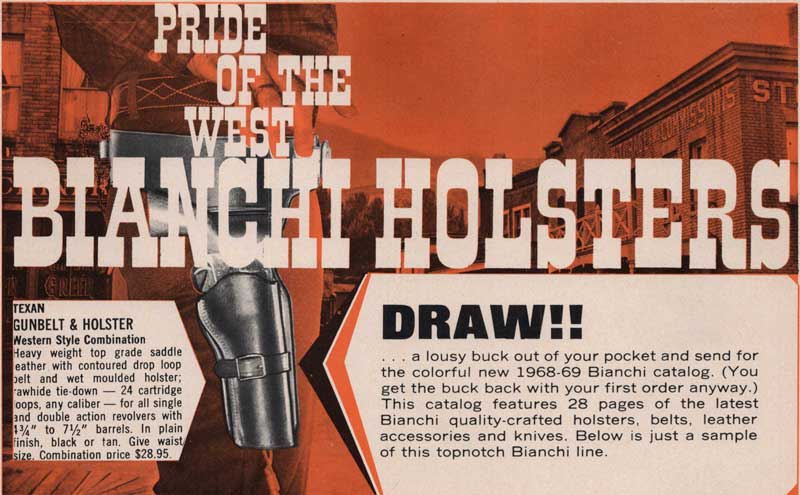
Within six months, the demand for his work was far outstripping production capacity, so he hired additional workers and moved to larger quarters. And within the past few years, Bianchi’s business has quadrupled, enabling him to build a modern, $100,000 plant.
Bianchi Holster Construction
When I toured the factory I quickly discovered that the emphasis is still on quality rather than speed of production. Bianchi personally trains all his employees and inspects each day’s output before it leaves the plant.
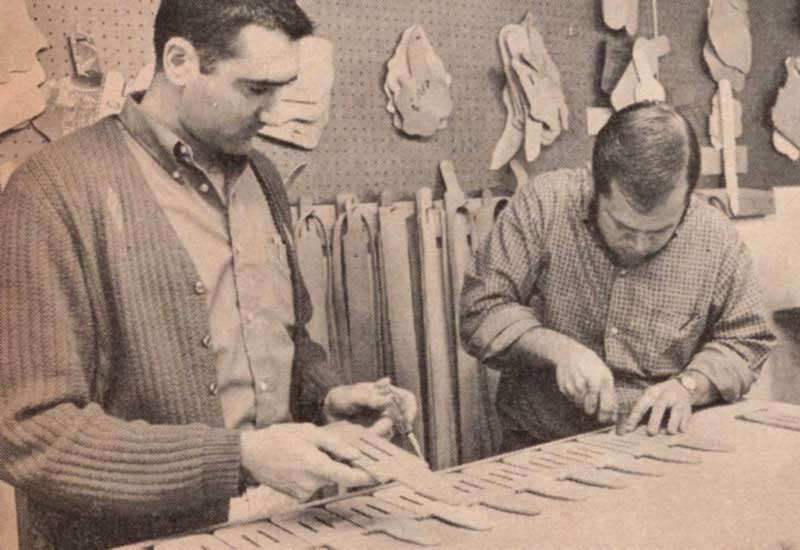
A typical holster starts out as a piece of Grade A glazed cowhide. The leather is wet-fit to a mold of the gun it will carry and then cut to shape. Next, the seams are sewn with six-cord linen thread that is doubled at stress points. Finally, the holsters are dried in infrared ovens, hand-rubbed and oiled. Making a scabbard is a simple job, basically, but it requires a good deal of skill and attention to detail if the product is to be good.
Holster Models
There isn’t space here for full descriptions of the more than 30 different holster models turned out by the Bianchi factory, so I’ll limit myself to giving a rundown of a few of the most popular models.
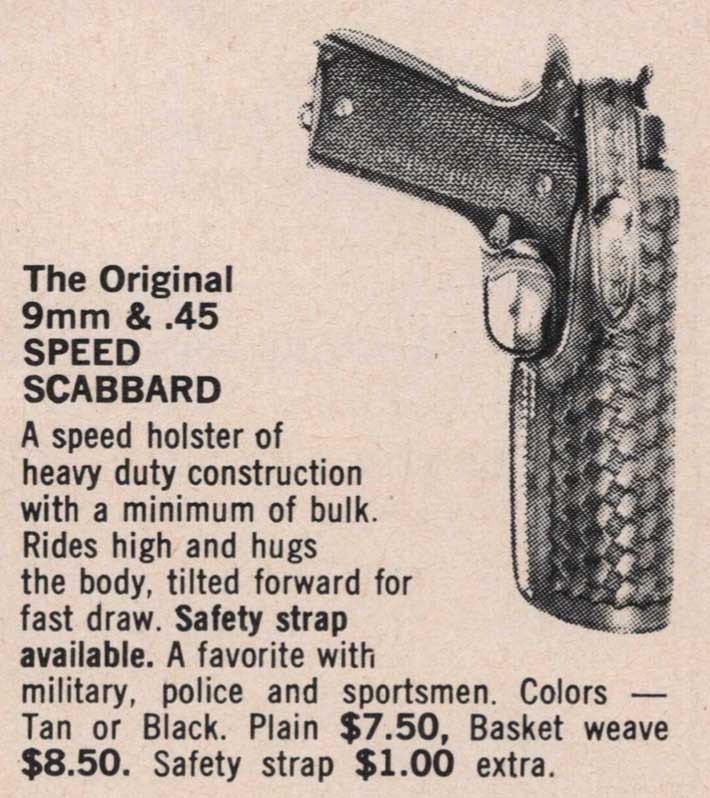
The .45 Speed Scabbard is designed for the Colt .45 and S&W Model 39 automatics. It leaves the entire grip and trigger guard free and holds the gun by its slide. Popular among servicemen in Vietnam, it costs $7.50 plain or a dollar more with a basketweave pattern.
Model X-15 Shoulder Holster
Another big seller among GI’s is the X-15 shoulder holster. This scabbard attaches to the belt and has a loop that goes over one shoulder; there are no straps across the wearer’s chest.
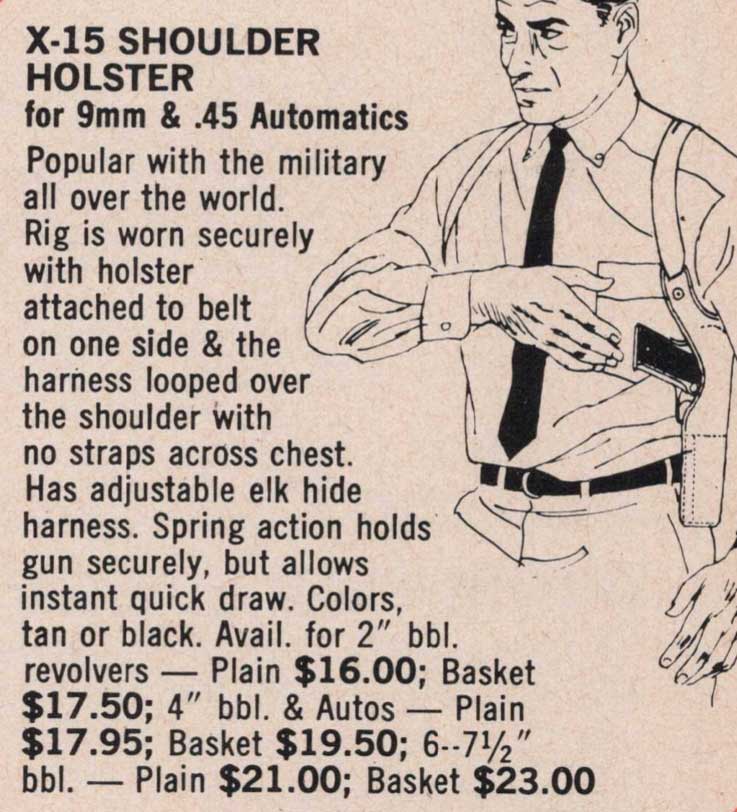
The X-15 holds a .45 or Model 39 auto by friction alone since experience has shown that safety straps on this rig only serve to slow down the draw. You can also get an X-15 for snub-nose or standard-length revolvers, and it costs from $16 to $23, depending on the gun it’s intended for and the degree of decoration.
Ranger Holster
Another unique design for the .45 automatic is the Ranger model. This holster has an unusual “cocking shelf” that enables you to carry a gun with an empty chamber and still get into action quickly. When you draw, you simply shove the slide against the cocking shelf; this will ready the pistol to fire before it leaves the holster. The price for this model is only $9.50.
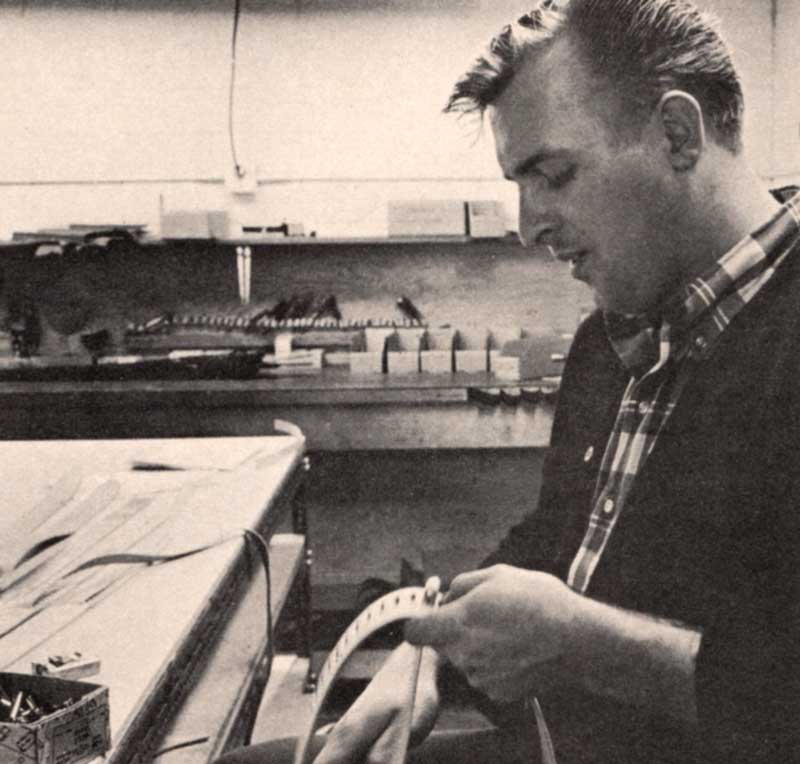
You may have noticed that several different Bianchi holsters are specifically designed for the .45 auto. This is because Bianchi feels that each popular handgun should have at least two or three different scabbards available for it, and the Colt automatic is one of the most widely used combat arms of all. Naturally, there are Bianchi holsters available for most revolvers and other autos as well.
Additional Leather Shooting Gear
In addition to gun belts and scabbards, Bianchi is branching out into other lines. His factory has begun manufacturing saddle scabbards, rifle slings, ammo pouches and cartridge belts. And in addition, he now sells hunting and combat knives made by J. Nelson Cooper, a top-flight cutlery craftsman. Cooper knives are expensive (most models are in the $30 bracket) but they’re worth the price.
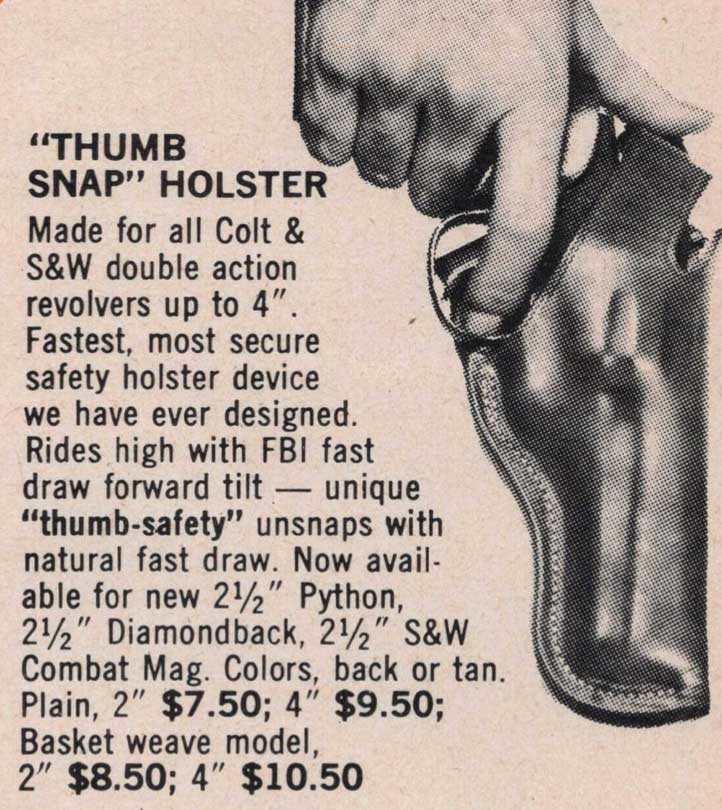
As this goes to press, Bianchi is breaking ground for a completely new manufacturing facility. The head of the firm tells me that this will be the largest and most up-to-date plant of its kind in the world. It’s bound to mean increased holster production and an expanded array of models.
I could go on at great length about the Bianchi line-up, but it would be much simpler for you to get a Bianchi catalog, which you can do by mailing $1 to Bianchi Holsters, Dept. GH-9, 802 S. Primrose Ave., Monrovia, Calif. 91016.
How to Pronounce Bianchi
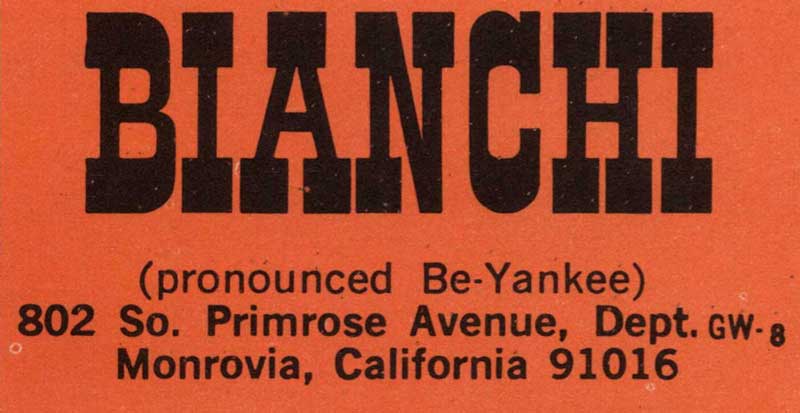
Incidentally, if you’re uncertain about the pronunciation of Bianchi, it sounds like “Be-Yankee.” Any way you say it, the name means quality.